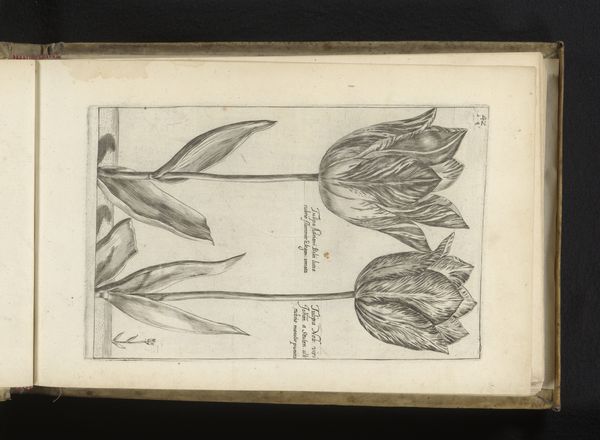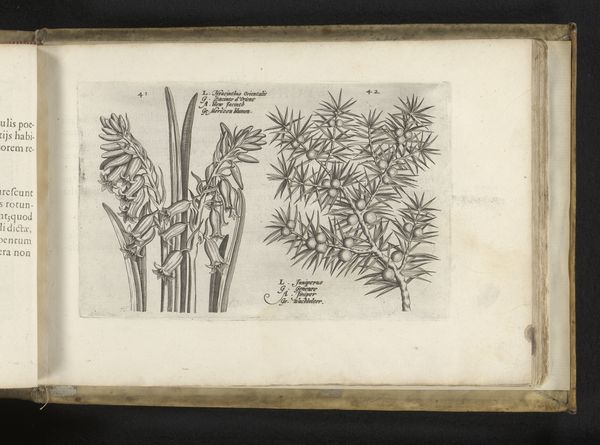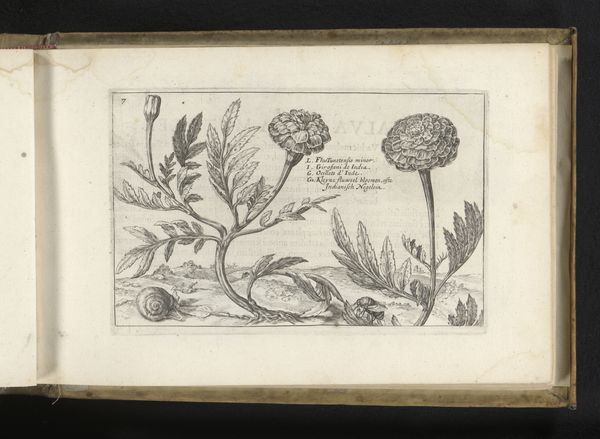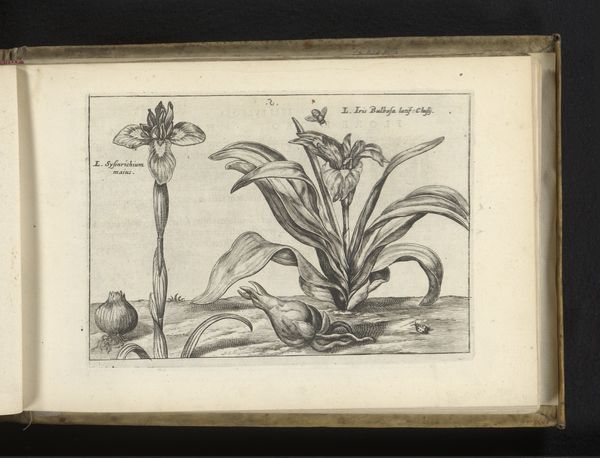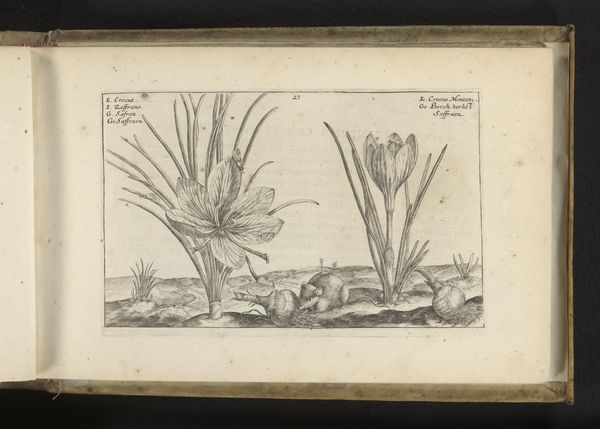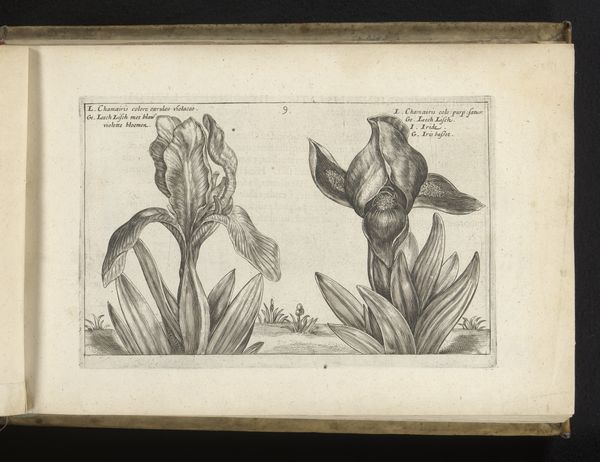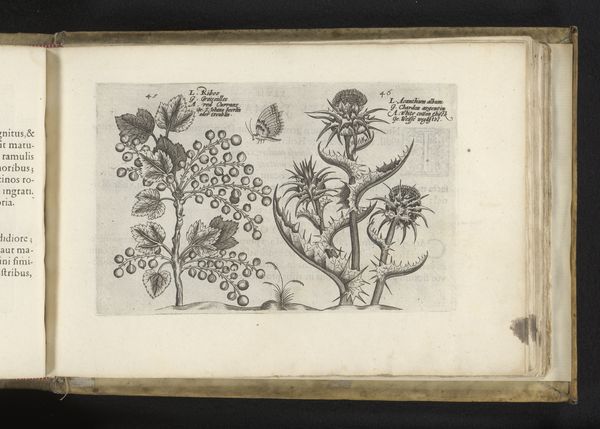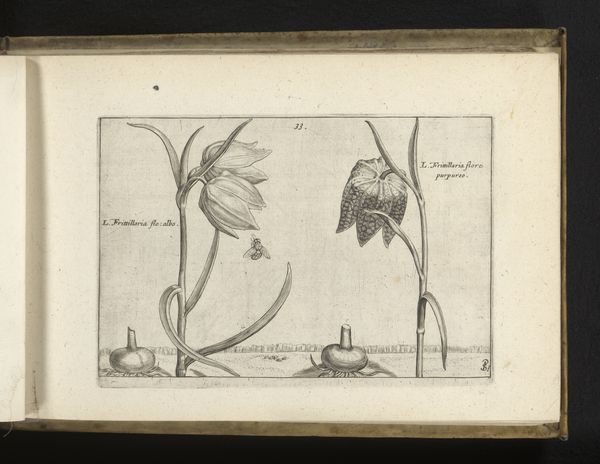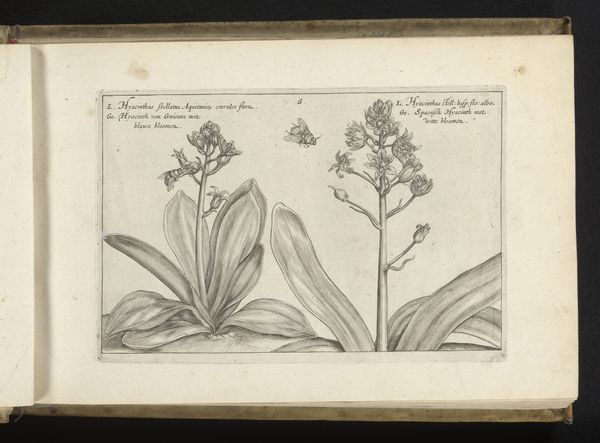
drawing, paper, ink
#
drawing
#
aged paper
#
toned paper
#
light pencil work
#
baroque
#
sketch book
#
flower
#
paper
#
personal sketchbook
#
ink
#
geometric
#
pen-ink sketch
#
pen and pencil
#
line
#
pen work
#
sketchbook drawing
#
sketchbook art
Dimensions: height 140 mm, width 213 mm
Copyright: Rijks Museum: Open Domain
Editor: Here we have "Indisch bloemriet," a drawing in ink by Crispijn van de Passe the Younger, dating back to 1617. It’s a surprisingly detailed botanical study; the textures of the leaves are incredible, and the overall feeling is quite scientific. What's your read on it? Curator: It’s interesting how you see the scientific nature so strongly. To me, this drawing reveals much about the intersection of art, science, and colonialism in the 17th century. Consider the title; “Indisch bloemriet,” referring to a flower from the Indies. Editor: Right, that’s where the colonial piece comes in. Curator: Exactly. Artists like van de Passe were instrumental in visually documenting the “new world” for a European audience, shaping perceptions of these faraway lands and their resources. How might the institutional settings influence it, if it were created for scientific or artistic communities? Editor: That makes me think about the intended audience. Was this purely documentation, or was there a sense of exoticism being marketed here? The detail does feel scientific, but maybe heightened for drama? Curator: Precisely! And think about the political implications. This type of imagery played a role in justifying colonial expansion and resource exploitation. By showcasing the exotic flora, it visually reinforced the idea of the "Indies" as a land ripe for the taking. Editor: So it's not just a pretty flower; it's a visual tool within a larger power structure. Curator: Absolutely. Looking at this drawing now, we can consider its complex history and the public role it played in shaping European attitudes toward the non-European world. The botanical drawing, something we take for granted, can then reveal its deep roots in cultural institutions and politics. Editor: It’s amazing how a simple drawing can tell such a complex story. I’ll definitely be thinking differently about botanical illustrations from now on.
Comments
No comments
Be the first to comment and join the conversation on the ultimate creative platform.

